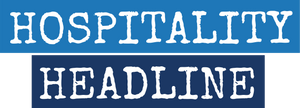Regardless of what and how you sell, your customers experience your brand through software. But it’s all too common for software to have ‘code bloat’. Code bloat is a liability, and it creates baggage for everyone: the software maker, the customer, and the end user. So why are software companies still piling ‘code baggage’ at the customer’s doorstep? And what can be done?
The easiest way to be successful at marketing and selling software is to not create and sell junk. Notice that I didn’t say create great software. Very few actually do. In my opinion, there are no Point of Sale (POS) products that I would classify as ‘great’, for example. A few of them are good, at best. Far more are below average or just simply poor. Some POS companies have growing US restaurant market share but when the biggest winner has between 9-12% of the overall market, something is wrong.
In the land of mediocre, the tallest midget wins.
If you are a software maker, how can you know what your customers consider ‘great’ or even ‘good’? It doesn’t happen by looking at your competitors on your right and left and trying to create the features they have. Their customers are not your customers. If you create something your customers aren’t asking for, then you waste research and development cycles and dollars creating something that your customers don’t necessarily want.
It’s tempting to cater to the ‘elephants’ - those large, multi-unit operators with deep pockets. Often what happens is that a software maker tailors their product to suit the needs of these big customers, and then assumes those features have value to a broad base of customers. The problem is myopia: getting so focused on features that fit one or two large customers, without listening to the broader market and what they need. The product can become confusing, complex, and even ‘monolithic’ like the ‘elephant-sized’ customers.
The goal of today’s coding is to achieve the most with the least amount of code. Interface matters. Modern UI/UX seeks to present nothing that is not essential for operation. Software products don’t win by large complex code bases. If you are a software maker, carrying unnecessary code baggage is slowing you down and diluting value to customers.
Even teams, organizational structures, and sales efforts become oriented and tailored to these few large customers. Pretty soon opportunities for new prospects and customers are limited and leaders scratch their heads wondering why the product doesn’t appeal more broadly, "after all some big brands use it".
What’s the Answer?
Everything you need to know about being a successful software maker you can learn from your customers simply by listening. An adage I heard a few years back rings true: you were given two ears and one mouth. Use them in proportion. It seems obvious, but my decades of experience in the software industry has shown me that not enough companies listen (or listen intently enough) to their customers.
More software companies need to listen more, and better.
But how can you dig into what matters to prospects? How can you know which features and capabilities of the software your users are actually using?
Certainly, you could survey customers or involve them in user experience focus or user groups or customer advocacy programs.
But perhaps a more effective approach would be to use software products that help you monitor your software product customer usage. Tools like Pendo, WalkMe, Userpilot and others can help you understand user behavior, giving you qualitative and quantitative insights into things like:
- Frequency of log-in
- User persona / role
- Features used
- Time spent
- Interactivity and sharing
It’s very hard to be exceptional in every aspect of your product, so having deep insights into user behavior can inform your understanding of user needs and habits as well as your short- and long-term product roadmap. This knowledge helps you validate product decisions and focus your investment and development efforts on things that matter to your users.
It’s a focus on acquisition, activation and retention. Why? Because your value as a business is expressed as the habit you’ve created with your software.
Product usage insights can reveal features that you should stop supporting because of low usage / high cost to maintain. Maybe you’ll actually put your software on a diet and reverse code bloat and feature creep.
I know you’re thinking your customers will complain. But if you remove what they aren’t using, in reality, they won’t miss it.
In total, listening and acting on the insights you gain can result in a much happier looking hype curve and create a virtuous cycle of Know, Like, Trust, Try, Buy, Repeat, Refer.
In Conclusion
Wouldn’t it be great if the right insights ended up helping you create products that appeal to a broad base of prospects and take away sales from your competitors? Listening and acting on your insights can offload code, making your software company more agile, offering products that appeal more broadly and competing more effectively.
Up Next
Look for my next article in this series, in which I’ll explore the question ‘Can SMB software companies effectively move upmarket?’ For many good reasons, many software startups start ‘down market’, selling to small and medium sized businesses. Moving ‘up-market’ is more difficult than they may realize, and software buyers should be aware of the limitations inherent in software developed for SMBs. In my next article, I’ll discuss why, and what to look out for, as you consider potential vendors for your mission-critical technology stack.

